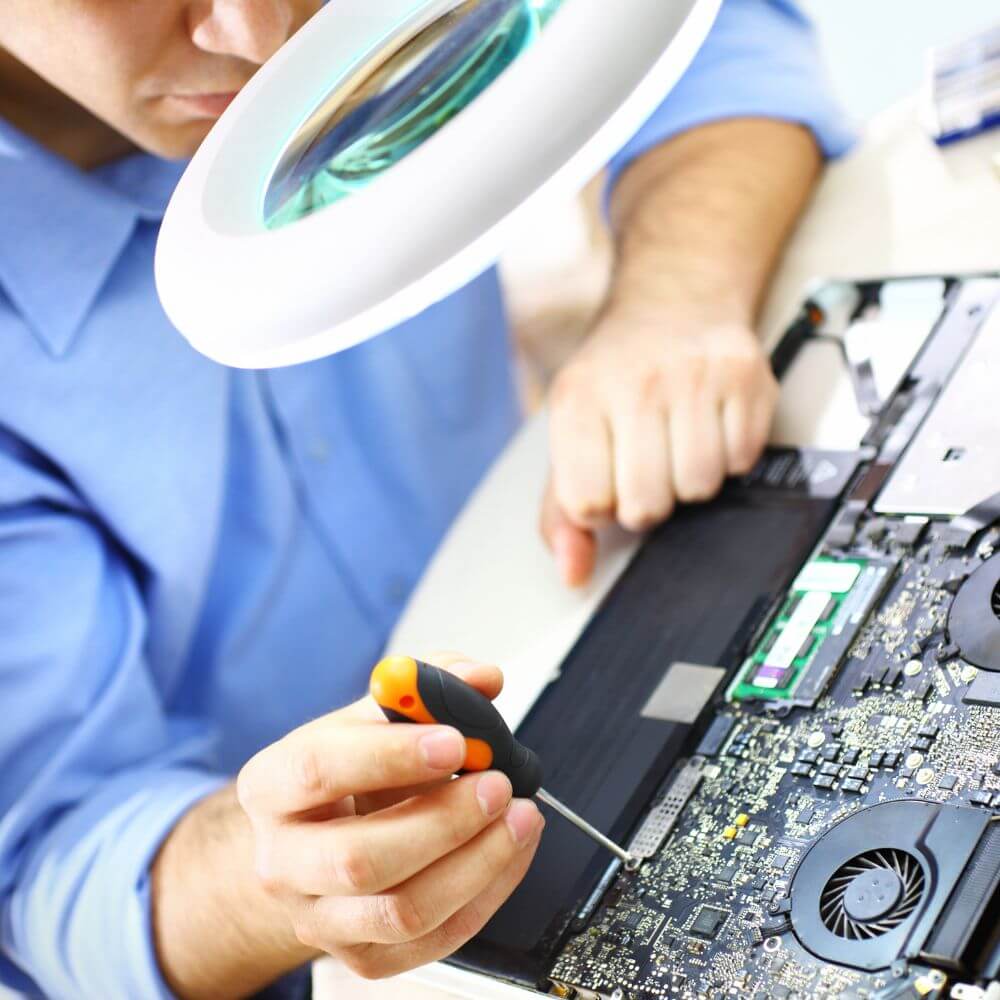Pigtou.com is supported by its audience. When you buy through the links on our website, we may earn a small commission.
Laptops today are much more advanced than they used to be at inception. However, they are not perfect. Notably, one imperfection that can be observed on many laptops across many brands is bloatware.
Because software manufacturers can pay laptop manufacturers to allow the software makers to put unnecessary software on laptops, many different laptop models come with bloatware. In addition, the hardware manufacturers may also offer software services that they are incentivized to market as this software can bring them profit.
Hence, some amount of bloatware is to be expected on most laptops. However, this is of great concern to those who dislike bloatware. Bloatware takes valuable storage space and makes one’s laptop appear cluttered and unorganized. Hence, it is only natural that some users desire laptops free of bloatware.
However, merely being devoid of bloatware is not sufficient. These laptops must also offer the best features and functionality within their product category. After a thorough investigation, our team concluded that the best laptop without bloatware is the M1 MacBook Air.
However, this article will also discuss other laptops that can be regarded as some of the best without bloatware.
The Best Laptop without Bloatware
1. M1 MacBook Air– Best Overall Laptop without Bloatware
Key Features:
- Powerful octa-core M1 processor
- 18hr battery life
- 2TB SSD
- Thunderbolt support
From its octa-core central processing unit to its hepta-core graphics processing unit, the M1 MacBook Air has several features that distinguish it as the best laptop without bloatware which is why it is our top pick.
It offers up to 18 hours of battery time despite being able to support up to 2TB of solid-state drive storage and an impressive 16GBs of random access memory. With these features, it can easily power any task it is given.
It manages to do this while weighing just 2.8 pounds and has a screen with a brightness of 400 nits. At 13.3 inches, this screen is quite convenient to use on the go. In addition, its thunderbolt ports allow users to connect to external monitors and other devices, allowing those who desire to use larger screens.
In addition, the M1 MacBook Air has an exquisite aluminum build that comes in a variety of colors, namely gold, silver, and space gray.
Pros
- It has a powerful processor
- This laptop is very thin
- The M1 MacBook Air has a massive solid-state drive storage
- This device supports touch identification
- The display is quality
Cons
- It is very expensive
- The device lacks a back camera
- The laptop’s webcam is only 720p
2. Microsoft Surface Pro X – Best 2-in-1 Laptop without Bloatware
Key Features:
- 13-inch screen
- 16GB RAM
- Microsoft SQ2 CPU
- 2-in-1 laptop
The Microsoft Surface Pro X is undoubtedly a juggernaut when it comes to its flexibility and convenience of use. With its 13-inch screen and 1.7-pound weight (when the keyboard is weighed separately), this laptop offers the best versatility in terms of physical use.
In line with its emphasis on multiple form factors, it has a high-quality back camera capable of shooting a 4K video. Depending on the model in question, it offers Microsoft’s latest SQ2 central processing unit and up to 16GB of random access memory. It’s no slouch when it comes to speed, and its Adreno 690 graphics processing unit is further evidence of that.
It also comes with stereo speakers, making it a good choice for sound engineers and movie lovers. In addition, with its Surface Connect and 2 types of C Universal Serial Bus ports, it can conveniently accommodate multiple external devices.
However, its maximum solid state drive storage is less than many other laptops without bloatware.
Pros
- It can function as both a tablet and laptop
- The device has a front and back camera
- The Microsoft Surface Pro X also has a touchscreen
Cons
- The keyboard and stylus are purchased separately
- Its SSD is capped at 512GB
3. Microsoft Surface Laptop Studio – Best 3-in-1 Laptop without Bloatware
Key Features:
- 14-inch screen
- 18hr battery life
- Stylus-compatible
The Microsoft Surface Laptop Studio offers a massive 14.4-inch, stylus-compatible, liquid crystal display, making it an excellent choice for graphic designers who need to sketch. In addition, the screen uses a 3:2 aspect ratio, making it convenient to draw on.
With the RTX 3050 Nvidia graphics processing unit in the more powerful configuration of this laptop model, it displays minute sketching details in real-time. This setup can also last up to 18 hours, meaning it can practically be used at any time to sketch a quick idea.
Pros
- The screen is quite Large
- This device is lightweight
- The Microsoft Surface Laptop Studio has a front camera and a back one too
Cons
- You have to buy the stylus, Slim Pen 2, separately
Here are the factors we considered before arriving at this list:
What to Look for in the Best Laptop without Bloatware
Aside from the absence of bloatware, here are other areas in which these laptops excel:
1. Central Processing Unit

People who are looking for laptops without bloatware generally want laptops that respond quickly with no lag or latency, and the speed of a laptop depends primarily on its central processing unit. For Windows laptops and users, a Core i7 or Microsoft SQ1 processor or higher is powerful enough to fulfill this requirement, while an M1 processor suffices for MacBooks
It is important not to go below Core i7 when looking for the best laptops because Core i5 and i3 laptops are best suited for word processing or playing games in the 2000s.
2. Graphics Processing Unit
Another key factor is a powerful graphics processing unit that seamlessly supports the latest video games and 3D rendering software. With this in mind, an RTX 3050 unit from Nvidia’s GeForce line or higher is recommended. However, Microfost’s Adreno unit from its SQ1 processor and Apple’s in-house M processor offer even better performance.
For reference, Cyberpunk 2077, one of the most graphics-intensive games, has a minimum requirement of a GTX 710, which all the items on this list surpass.
3. Random Access Memory
Random access memory is key for a laptop to run smoothly because it allows your laptop to run multiple programs and perform multiple tasks at the same time. The best laptops should offer 8GBs of random access memory or higher to be able to balance multiple high-end programs simultaneously.
Naturally, 8GB of random access memory also supports Cyberpunk 2077, the video game we use when assessing a laptop’s abilities.
4. Portability
The best laptops should be good at being laptops, and laptops must be lightweight and thin enough to be easily carried in a backpack or case from place to place. A laptop that’s light enough to carry around all day should weigh no more than 6 pounds at the most, which is about the weight of a bottle of water.
All these laptops weigh less than that, and some weigh even less than 2 pounds, depending on your configuration.
5. Hard Drive Storage
The best laptops need to offer fast and large amounts of storage. There are presently 2 forms of hard drive storage in the mark: solid state drives and hard disk drives. However, solid-state drives are much faster because they were invented after hard disk drives and are more closely linked with the laptop’s central processing unit.
Hence, they take less time to communicate with the unit. Also, unless you use your laptop for purely word processing, you need at least 512GB of storage. Hence, we recommend 512GB of solid-state drive storage, and all laptops on this list can deliver this.
6. Battery
Because laptops are specifically designed to be portable, the best laptops need to have batteries that can last for prolonged periods without access to a power source. This depends on the individual capacity of the battery, optimization of software with the device battery, and user choices.
However, an industry standard has been set with all these in mind and the standard is termed “typical device usage.” Realistically, the best laptops are able to last 8 hours or more of typical device usage, given that that is the timespan typically spent working.
All laptops on this list can exceed this timeframe.
Conclusion
The best laptop without bloatware must have the right balance of central processing capability, graphics processing power, random access memory, hard drive storage, portability, and battery life.
With all that in mind, the best laptop without bloatware is undoubtedly the M1 MacBook Air.




